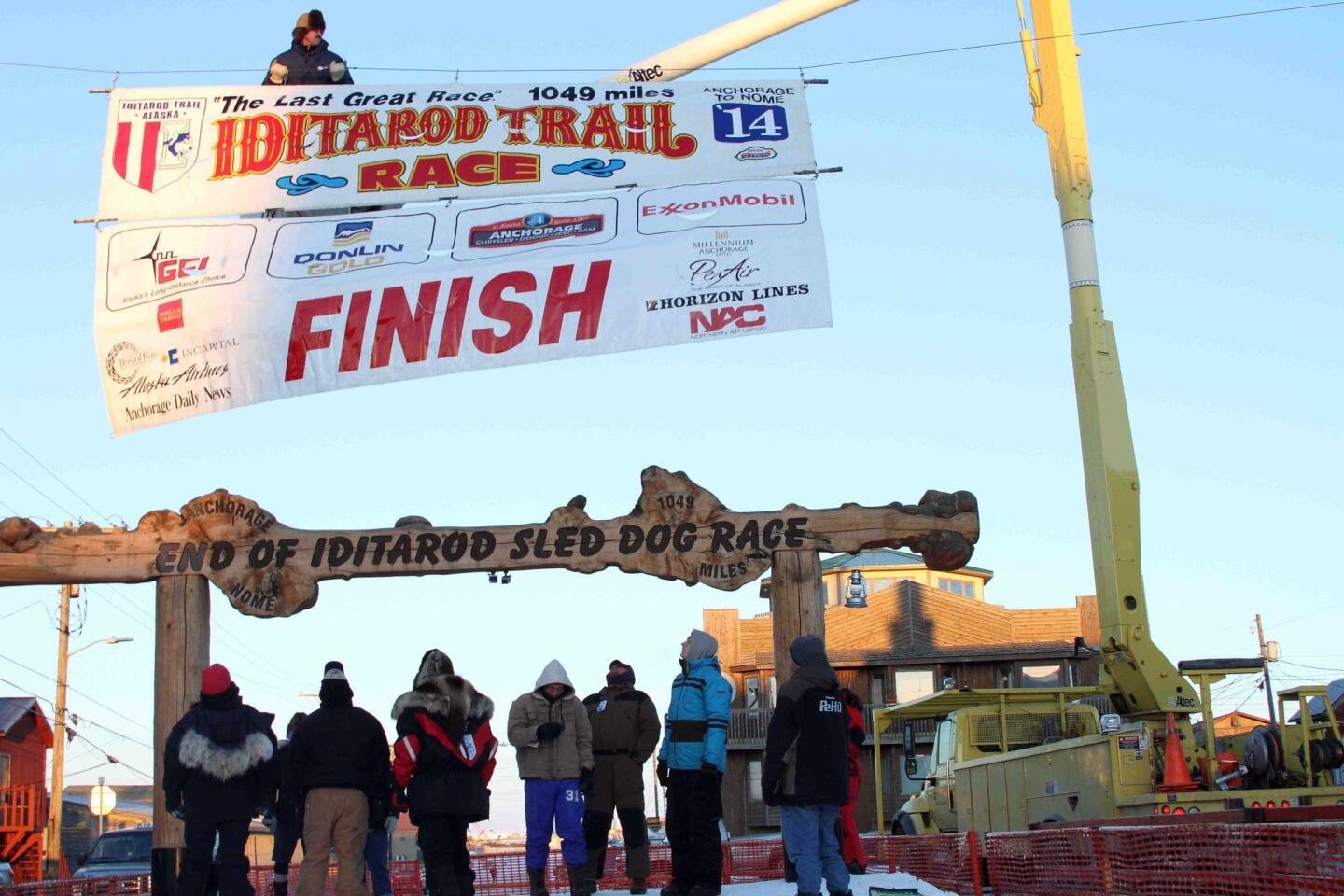Big problem with Iditarod: Plenty of mushers, sleds, but little snow
- Share via
In order to be a champion musher, you need dogs, sleds, a sense of athletic adventure and -- oh, yeah -- snow. Getting three out of four might work in baseball or basketball, but it just doesn’t count when it comes to the Iditarod, the 975-mile race that traditionally tests human and animal against Alaska’s elements.
Let’s face it: Without snowy, icy, even blizzard conditions, the race is nothing more than a fast, painful trek along Iditarod National Historic Trail. And this year the lack of snow along parts of the route have caused problems.
Meteorologists are blaming an especially warm January, the third-warmest in the 96 years of records. The warmth melted snow, and not even the cold temperatures of February were able to make things right, leaving patches a dirty brown, rather than white, wonderland. The warm-to-cold cycle also created nasty ice and debris problems.
“It’s a minefield out there,” former Yukon Quest champion Hugh Neff told reporters. “It’s the roughest I’ve ever seen,” said Jeff King, a 22-time race finisher. Musher Aliy Zirkle reported, “No snow. Zip. Zero. None.” Many suffered crashes, busted knees, bruises, and sprained ankles. Several are out of the race already, according to a variety of media reports.
The race is the most popular sporting event in Alaska, and participants are treated with the kind of adulation that is heaped only on athletes. There is also a point of local pride as teams race through subzero temperatures and wind chills that can approach triple digits. The Iditarod weather is similar to the kind of situation displayed in the Winter Olympic Games in Sochi, where unseasonable warmth threatened to undermine national pride. Russian organizers ended up carting in snow.
Over the weekend, workers in Nome, Alaska, took a page out of the Sochi playbook and trucked in snow for the big finish.
“Yeah, I know, it’s funny to see people dumping snow on a street instead of taking it off the street,” Greg Bill, the Iditarod’s development director, told reporters including the Associated Press. “To really dress it up and make it safe for the dog teams, we have to spread a layer of snow down for them to run on.”
The city set up the traditional arch and banner to mark a finish line, the end of the trek from Willow. In the past, the historic trail was used for all winter travel. The race harkens to a past when “dog sleds delivered the mail, the preacher, the groceries, and hauled out gold and furs all the way to Anchorage or Fairbanks,” the race notes on its website.
Two Alaska mushers arrived Monday morning at the second-to-last checkpoint, according to media reports. One was King, already a four-time champion; the other was Zirkle, seeking to become the third woman to win the race. King was less than an hour ahead of Zirkle as they pulled in to White Mountain, about 80 miles from the finish in Nome. Teams must take an eight-hour layover at the checkpoint.
The race began March 2 in Willow with 69 teams. As of Monday morning, 16 mushers had scratched, leaving 53 teams on the trail, which was marked by long stretches of bare and rocky ground that made for an icy, treacherous trail in the early part of the race.
The first to reach Nome receives $50,000 and a new truck. The 29 teams after that win cash prizes decreasing on a sliding scale. All other teams finishing the race receive $1,049.
ALSO:
Edward Snowden tells tech-savvy crowd: Be Internet ‘firefighters’
Boston Marathon beefs up security with thousands of cops, no-bag rule
Star-spangled celebrations planned for national anthem’s 200th anniversary
Follow LATimes National on Facebook
More to Read
Sign up for Essential California
The most important California stories and recommendations in your inbox every morning.
You may occasionally receive promotional content from the Los Angeles Times.















